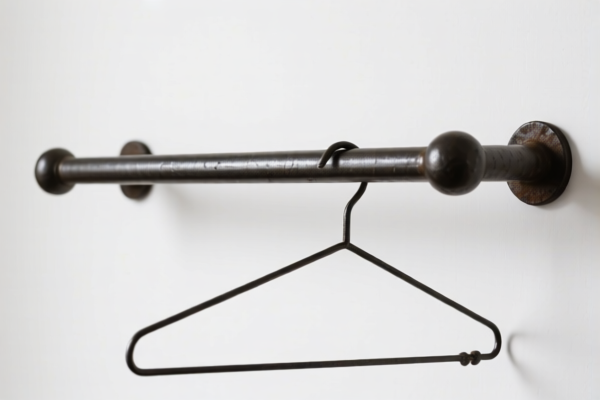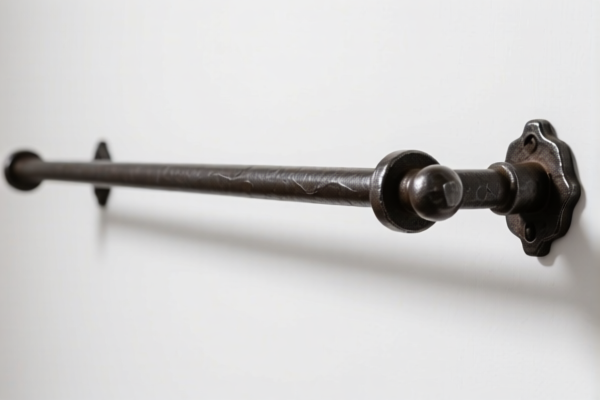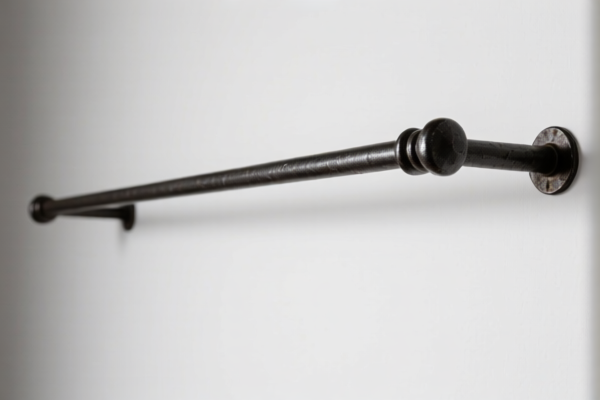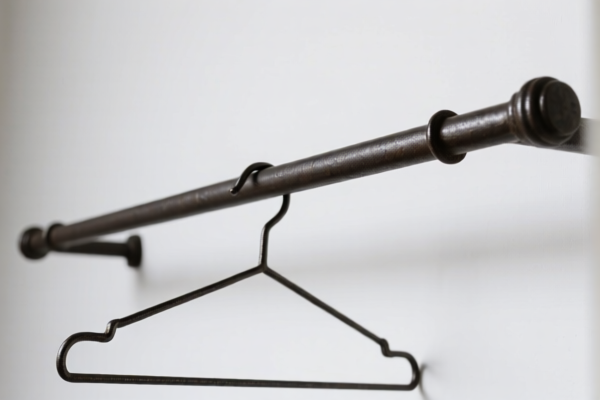| HS Code | Official Doc | Tariff Rate | Origin | Destination | Effective Date |
|---|---|---|---|---|---|
| 7308907000 | Doc | 80.0% | CN | US | 2025-05-12 |
| 9406900190 | Doc | 82.9% | CN | US | 2025-05-12 |
| 9406900130 | Doc | 82.9% | CN | US | 2025-05-12 |
| 7326908630 | Doc | 82.9% | CN | US | 2025-05-12 |
| 7326908676 | Doc | 82.9% | CN | US | 2025-05-12 |
| 8311900000 | Doc | 55.0% | CN | US | 2025-05-12 |
| 8307103000 | Doc | 58.8% | CN | US | 2025-05-12 |
| 8307106000 | Doc | 58.8% | CN | US | 2025-05-12 |
| 8304000000 | Doc | 33.9% | CN | US | 2025-05-12 |
| 8302423065 | Doc | 66.4% | CN | US | 2025-05-12 |
| 8302496085 | Doc | 85.7% | CN | US | 2025-05-12 |




Wardrobe Hanging Rail Rod
A wardrobe hanging rail rod is a horizontal bar used within a wardrobe or closet to suspend clothing. It is a fundamental component for organizing and storing garments, maximizing space and preventing wrinkles.
Material
Hanging rail rods are commonly constructed from the following materials:
- Steel: Offers high strength and durability, suitable for heavier items like coats and suits. Often coated with chrome, nickel, or powder coating for rust resistance and a polished appearance.
- Aluminum: Lightweight and corrosion-resistant, ideal for closets where weight is a concern or in humid environments.
- Wood: Provides a classic aesthetic and is suitable for lighter garments. Typically made from solid wood or wood composite materials.
- Plastic: Less common for primary rods, often used for specialized applications like accessory hanging or lightweight items.
Purpose
The primary purpose of a hanging rail rod is to provide a convenient and efficient means of suspending clothes, enabling:
- Organization: Categorizing clothing by type, color, or season.
- Space Optimization: Utilizing vertical space within a wardrobe.
- Wrinkle Prevention: Allowing garments to hang freely, minimizing creases.
- Accessibility: Facilitating easy selection and removal of clothing.
Function
The function of a hanging rail rod relies on its structural integrity and support capabilities. Key functional aspects include:
- Load-Bearing: Supporting the weight of suspended garments without bending or breaking.
- Stability: Maintaining a secure position within the wardrobe structure.
- Smooth Surface: Preventing snagging or damage to clothing.
- Compatibility: Working with standard hangers.
Usage Scenarios
Hanging rail rods are utilized in a wide range of settings:
- Residential Closets: Standard feature in bedrooms, walk-in closets, and linen closets.
- Retail Environments: Used in clothing stores to display merchandise.
- Commercial Spaces: Found in hotels, dry cleaners, and garment storage facilities.
- Portable Wardrobes: Integrated into freestanding closet systems for temporary or limited storage.
Common Types
Several types of hanging rail rods are available, varying in design and features:
- Single Rod: A single bar for hanging clothes. The most common type.
- Double Rod: Two parallel bars, allowing for increased hanging capacity, often used for shirts and pants.
- Adjustable Rod: Allows for height customization to accommodate different garment lengths.
- Fixed Rod: Permanently installed at a specific height.
- Tension Rod: Spring-loaded rod that fits between two walls without requiring installation, suitable for temporary or lightweight applications.
- Fluted Rod: Features a textured surface to prevent clothes from slipping off hangers.
- Corner Rod: Designed for installation in corners to maximize space utilization.
The declared goods, a wardrobe hanging rail rod, are components used for supporting clothes within a wardrobe or storage space. They are typically made of metal, serving a structural function in organizing garments.
The following HS codes are relevant based on the provided reference material:
-
7308907000: Structures (excluding prefabricated buildings of heading 9406) and parts of structures (for example, bridges and bridge sections, lock gates, towers, lattice masts, roofs, roofing frameworks, doors and windows and their frames and thresholds for doors, shutters, balustrades, pillars and columns) of iron or steel; plates, rods, angles, shapes, sections, tubes and the like, prepared for use in structures, of iron or steel: Other: Steel grating.
- 73: Iron or steel. This chapter covers a wide range of iron and steel products.
- 08: Structures and parts of structures. This heading specifically covers components used in construction or assembly of structures.
- 90: Other. This subheading covers items within the chapter and heading that do not fall into more specific categories, including steel grating. While a rail isn't grating, it is a component prepared for use in structures.
-
7326908630: Other articles of iron or steel: Other: Other: Other Hangers and similar supports for tubes and pipes.
- 73: Iron or steel. This chapter covers a wide range of iron and steel products.
- 26: Other articles of iron or steel. This heading covers a diverse range of iron and steel products not classified elsewhere.
- 90: Other. This subheading covers items within the chapter and heading that do not fall into more specific categories. This code directly includes hangers and supports, which a rail could be considered.
- 86: Other. Further specifies the category of "other" articles.
- 30: Other. Further specifies the category of "other" articles.
-
8304000000: Desk-top filing or card-index cabinets, paper trays, paper rests, pen trays, office-stamp stands and similar office or desk equipment and parts thereof, of base metal, other than office furniture of heading 9403.
- 83: Base metal articles. This chapter covers articles made of base metals, including iron and steel.
- 04: Desk-top filing or card-index cabinets, etc. This heading covers office equipment. While a rail isn't office equipment, it could be considered a part thereof if used within an office storage system.
Regarding HS code 7308907000, 7326908630, please note that the total tax rate is 80.0% and 82.9% respectively.
Customer Reviews
No reviews yet.